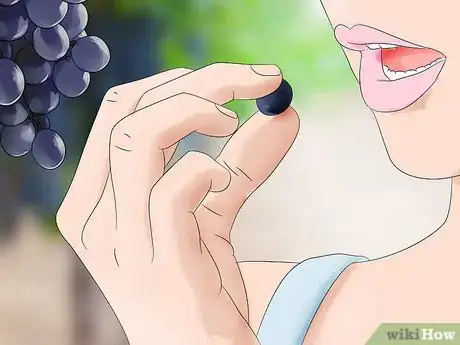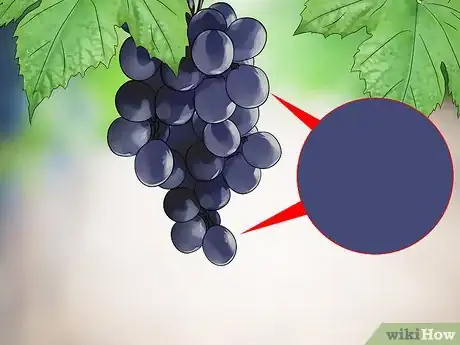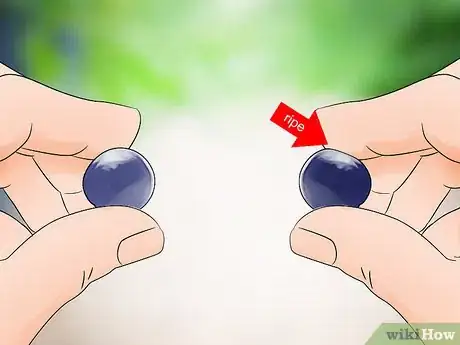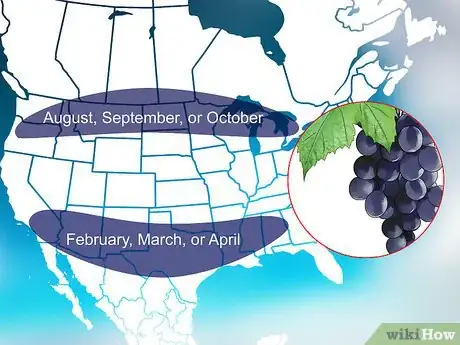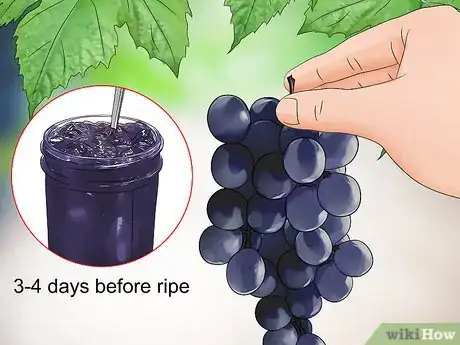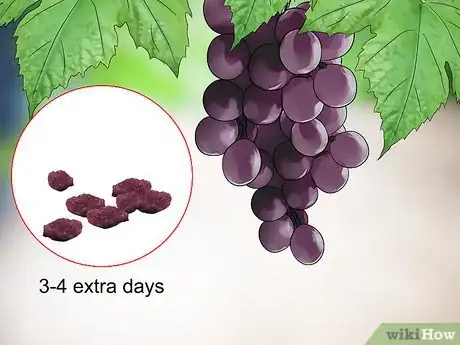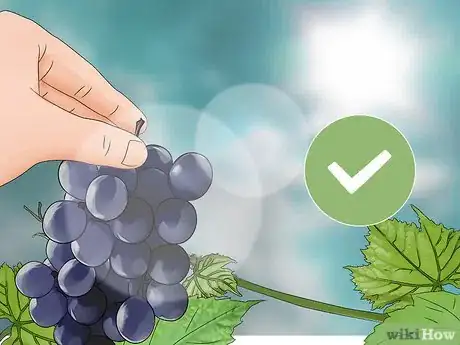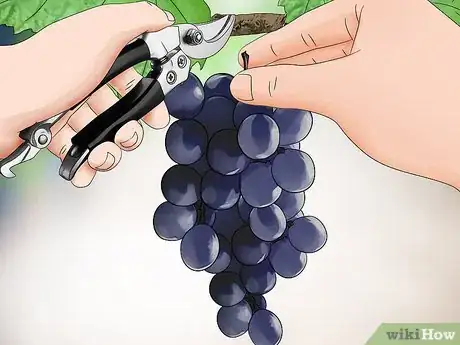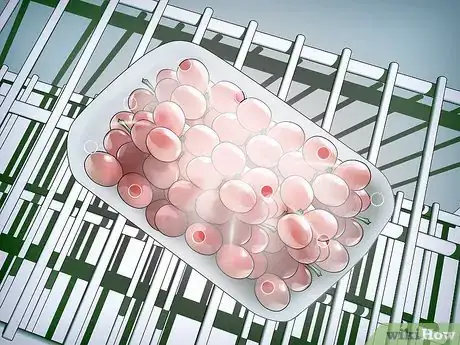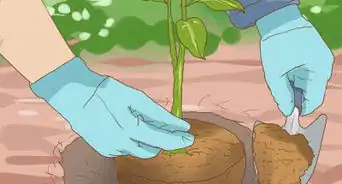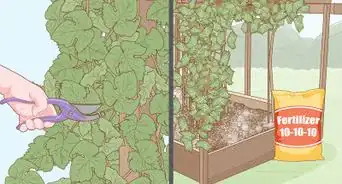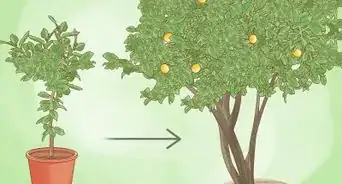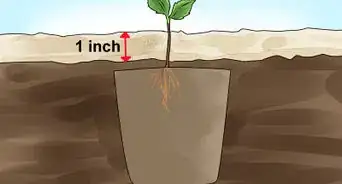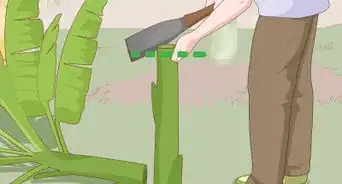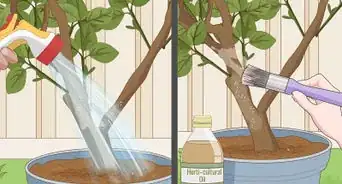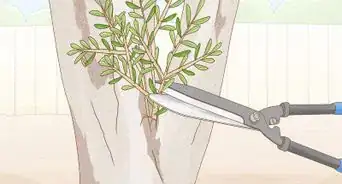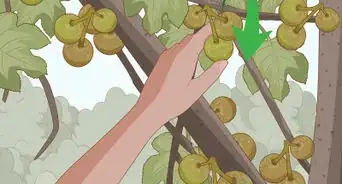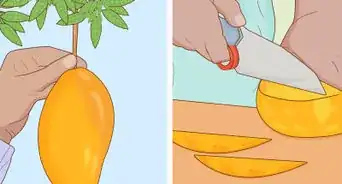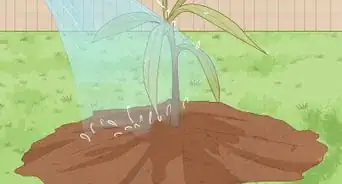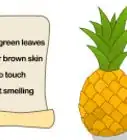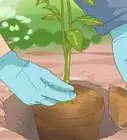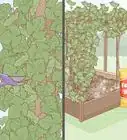This article was co-authored by Lauren Kurtz. Lauren Kurtz is a Naturalist and Horticultural Specialist. Lauren has worked for Aurora, Colorado managing the Water-Wise Garden at Aurora Municipal Center for the Water Conservation Department. She earned a BA in Environmental and Sustainability Studies from Western Michigan University in 2014.
This article has been viewed 23,570 times.
Grapes come in many varieties, but they can all be harvested in more or less the same way. While commercially produced grapes are typically harvested by machine, home-grown grapes can be harvested by hand, using a sharp pair of scissors or garden pruners. The intended purpose of the grapes (e.g., wine, raisins, or jelly) influences when they’ll be harvested. Table grapes are eaten plain, and harvested when fully ripe.
Steps
Testing Grapes for Ripeness
-
1Taste the grapes to determine if they’re ripe. Tasting grapes is the most reliable method to tell whether or not they’re ripe. Pop a few in your mouth and chew: if the grapes are firm, sweet, and not tart, they’re most likely ready to harvest. Taste grapes from a few different clusters and different vines, so you get an idea of their overall ripeness.
- Since different varieties of grapes have different natural flavors, tasting grapes is most effective if you know what the variety tastes like beforehand.
- If you’re not sure, visit a supermarket and taste a few grapes of the variety you’re growing at home.
-
2Inspect the color of the grapes for a consistent hue. Ripe grapes will have a consistent color over their entire surface. Red varieties will have a deep purple color, and green grapes will look slightly yellow when ripe.
- Be aware, though, that grapes develop their mature color 1–3 weeks before they’re fully ripe. So, don’t judge grapes’ ripeness by color alone.
Advertisement -
3Feel the grapes to evaluate their ripeness. Take a few grapes in your hand, and use your fingers and palm to lightly squeeze them. Ripe grapes will feel plump and full of juice. On the other hand, immature grapes will feel hard and not have any give when you squeeze them with your fingers.
- Table or wine grapes that are left on the vine for too long will begin to shrivel and wrinkle, and have a dried-out texture.
-
4Watch for birds on the grapevines. Birds will be able to tell as soon as the grapes have ripened, and will congregate on the vines in order to eat the grapes. If you see birds gathering around your grapes, you can be reasonably sure that the grapes are ripe. Taste a few to make sure.[1]
- The disadvantage of this, of course, is that the birds may eat a substantial number of grapes if given enough time. Once you notice birds gathering on your grape vines, plan to harvest in the next 2 or 3 days.
Timing the Harvest for Non-Table Grapes
-
1Pick wine grapes in the early fall. Wine grapes should be picked when ripe, but the grapes are usually ripe within a specific window of time. In the northern hemisphere, harvest wine grapes in August, September, or October. In the southern hemisphere, harvest wine grapes in February, March, or April.[2]
- The specific timeframe in which grapes ripen can vary widely based on differences in seasonal weather.
- Grapes for wine should have a higher sugar content than table grapes. To achieve this, wine grapes are often left on the vine for 2–3 months after table grapes are harvested.
-
2Harvest grapes for jelly before they’re ripe. Since grapes that are used to produce jams or jellies are typically mixed with various other ingredients—including sugar—you can harvest them a little prematurely. Harvest these grapes 3–4 days before you would harvest grapes that will be used for wine or eaten plain.[3]
- Harvesting slightly premature grapes for jelly prevents the jelly from being too sweet. If your grapes taste too sweet, you can reduce the sugar that you add to the jelly recipe.
-
3Leave grapes that will be used to make raisins on the vine for 3–4 extra days. This will increase the sugar content of the grapes, which in turn will yield a tastier, sweeter raisin.[4] Raisins made from grapes that are harvested any earlier may produce dull- or slightly bitter-tasting raisins.
- “Thompson Seedless” is an example of a grape that’s typically grown only for the purpose of turning the grapes into raisins.
Harvesting and Storing Grapes
-
1Harvest the grapes on a warm, dry day. If grapes are harvested on a rainy day or a day that’s cool, they will have lower sugar content and a less pleasant taste. Grapes harvested with rainwater on them will also store poorly, since the skins will be saturated with moisture.
- Unlike some other fruits, grapes will not ripen any more once they’ve been picked.
-
2Snip off clusters of ripe grapes with a pair of garden pruners. You can also use a sharp pair of household scissors for this task. Cut off individual clusters of grapes at the top of the cluster stem, near where it meets the large grape vine. Keep a large bucket or basket with you, so you don’t have to hold the harvested clusters of grapes in your hands.
- Avoid trying to break or tear off the clusters of grapes with your hands. You’ll risk damaging the grapes and the vine.
-
3Store grapes in your cellar for up to 6 weeks. Grapes keep well when kept in a relatively cool, dry environment. If you’re dealing with a large volume of grapes, preserve them by keeping them in a few clean, dry cardboard boxes. Line the boxes with clean straw to prevent the grapes from being jostled or squished.[5]
- The only caveat to be aware of when storing grapes is that they tend to absorb the odor of whatever produce they’re stored next to. So, keep grapes in an area of the cellar by themselves.
- Be mindful of rodents and insects when storing grapes in a cellar. Make sure the cellar is secure, and use traps and deterrents to minimize the risk that they will eat your crop.
-
4Freeze small batches of harvested grapes. Grapes are not harmed by freezing temperatures, and you can store them at 0 °C (32 °F) for 5–7 weeks. Freeze your grapes if you’re not planning on using them all at once, and if they will not be used to make wine. If you can control the humidity in your freezer, set it for 90%.[6]
- If you only have a few clusters of grapes and you’re planning to eat them within a few days, store them in a plastic bag in the vegetable drawer of your refrigerator.
Community Q&A
-
QuestionSince there are spiders in some of the grape bunches, can I soak them overnight?
 Community AnswerYes, soaking them overnight should get rid of the spiders.
Community AnswerYes, soaking them overnight should get rid of the spiders.
Things You’ll Need
- Garden pruners
- Scissors
- Gloves
- Bucket
References
- ↑ https://www.rd.com/home/gardening/how-to-know-when-to-harvest-grapes/
- ↑ https://www.thespruceeats.com/wine-grape-harvest-3511325
- ↑ https://www.rd.com/home/gardening/how-to-know-when-to-harvest-grapes/
- ↑ https://www.rd.com/home/gardening/how-to-know-when-to-harvest-grapes/
- ↑ https://www.almanac.com/plant/grapes
- ↑ https://www.rd.com/home/gardening/how-to-know-when-to-harvest-grapes/
